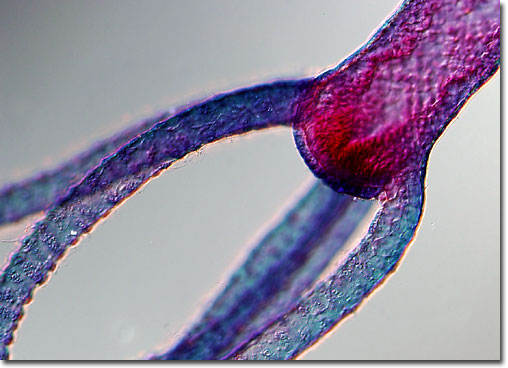|
Though not monsters by any means, the small freshwater creatures that belong to the class Hydrozoa and are commonly referred to as hydra in modern times do have several characteristics in common with their fearful namesake. Hydras feature numerous tentacles that bear poisonous nematocysts on their stalk-like bodies. The stinging cells enable the polyps to paralyze or kill prey and, since their bodies are flexible, they may consume creatures much larger than themselves. Furthermore, hydras have the power of regeneration. Even if one is completely severed in half longitudinally, it is possible for two genetically identical hydras to grow in its place. Small clones of a single parent hydra may also form through the asexual process of budding.
|
